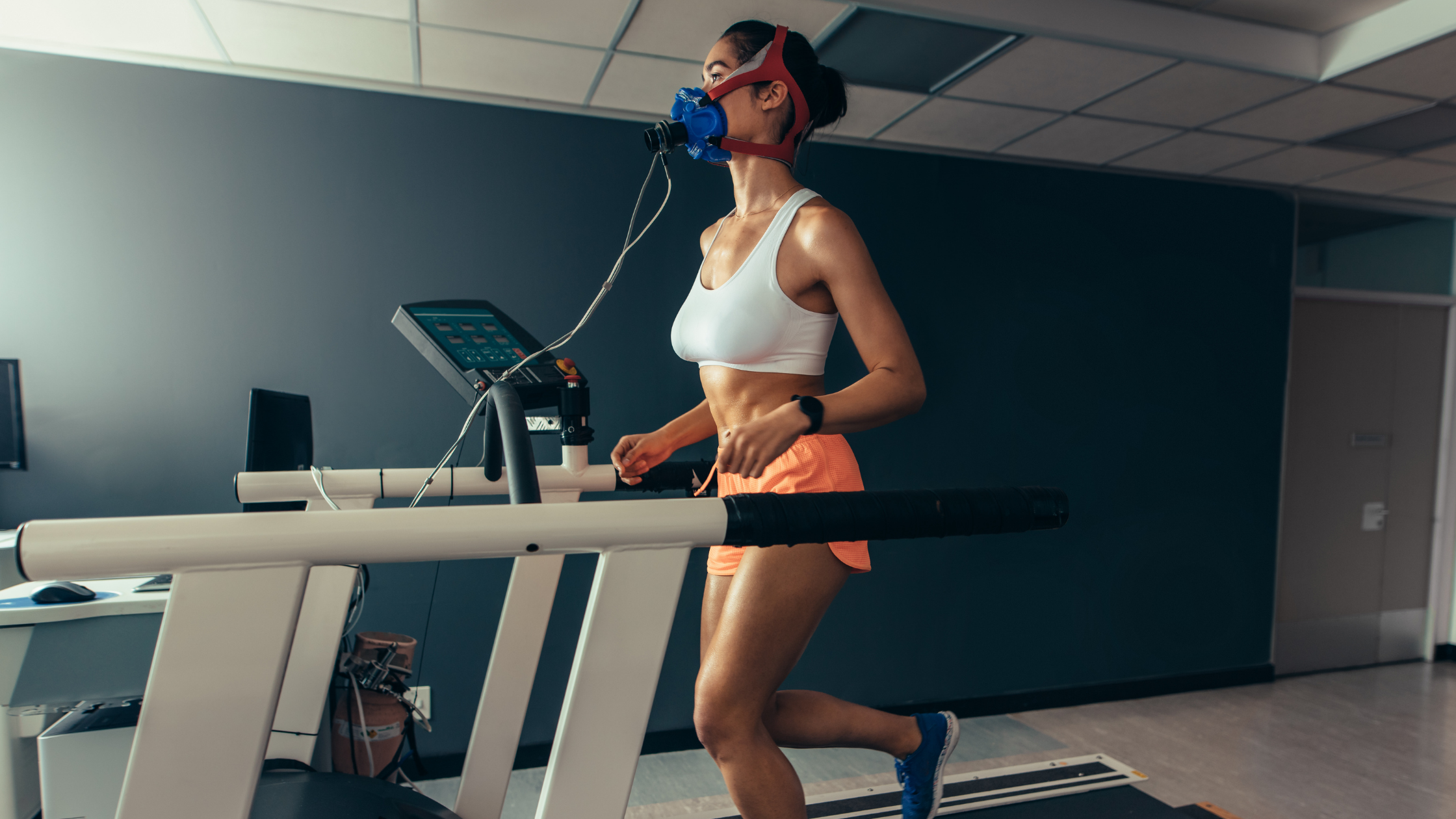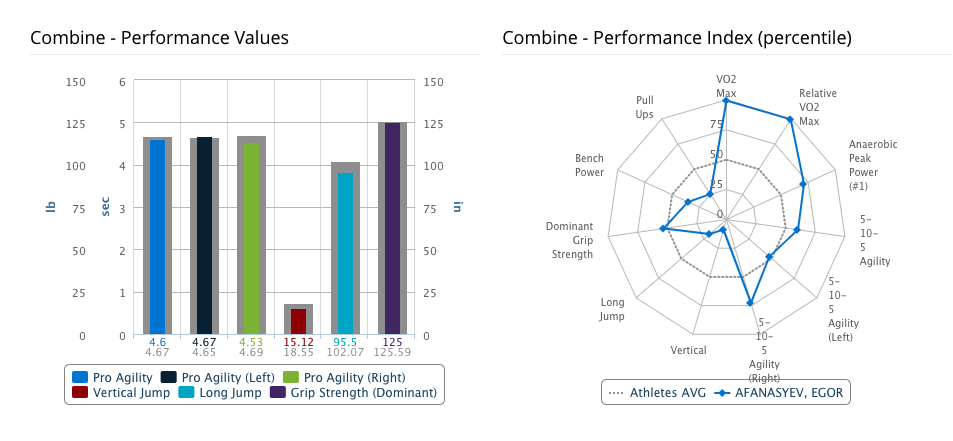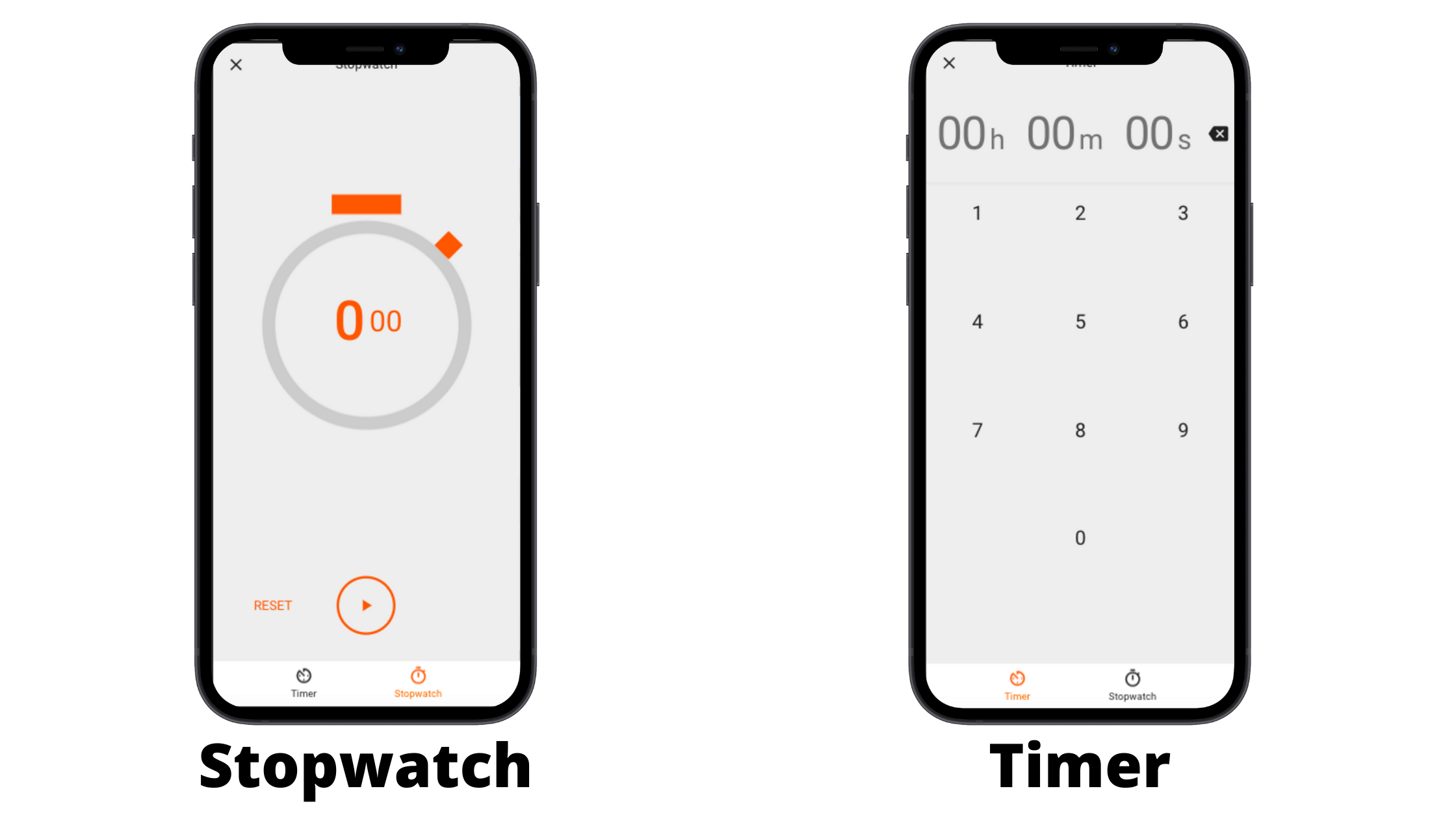
Conditioning tests are lab and field assessments of aerobic or anaerobic power. Most conditioning tests are field tests, meaning they don’t require lab equipment and you can simply do them with a stopwatch, a tape measure, and the athletes themselves. Some tests add more phytochemical instrumentation, as these can extract finite details of the aerobic and anaerobic status of athletes.
Team and Olympic sports have varying aerobic and anaerobic contributions to successful performances, and this guide both covers the full array of tests and reviews the pros and cons of laboratory testing and added technology. In addition to the testing equipment and protocols, we also include novel and practical ways to summarize and analyze aerobic and anaerobic performance.

The Common Conditioning Tests
Aerobic and anaerobic testing ranges from simple continuous running tests, such as a 2-kilometer run, all the way to full lactate and gas exchange testing on a treadmill. Most training programs use shuttle tests or similar repeated running to estimate athlete physiological abilities such as VO2 max, but simpler measures such as maximum aerobic speed (MAS) are also popular. Due to its connection with GPS systems, MAS is often used as a way to show a relationship between peak sprint velocity (also known as maximum sprint velocity) and aerobic capacity.
Invasive testing—specifically blood testing—can help estimate adaptations to the aerobic system, but a specific gas assessment is needed to actually determine if a hematological change occurred. With such a large set of options for testing, ranging from direct physiological testing to practical field assessments of space and time, coaches have the option to implement multiple tests to ensure their preparation and training are working as expected.
Gas Exchange Testing
Laboratory testing of an athlete’s aerobic system is still commonly used to detect change in fitness, though it remains controversial as to how useful the information is. While VO2 max isn’t a limiting factor in many intermittent or continuous sports, it does play a role in determining where the changes to the cardiovascular system are occurring.
Lactate Testing
Sports science staff still monitor change in lactate with testing because it represents a total body summary of the ability to handle physiological demands in conditioning. There are various testing options to find a lactate threshold for endurance sport, but lactate testing is used with team sports to determine sport-specific changes to conditioning. Due to its portability and cost, some coaches add lactate testing to other tests.
Shuttle and Running Tests
Shuttle tests and continuous running tests are arguably the most popular tests, due to their practical ability to prescribe training and their simplicity with data collection. The scientific evidence supports their use, but there are limitations based on the test performed, such as a 30-15 test or one of the Yo-Yo shuttle tests. Continuous running options are still used, but due to the demands of many sports, the distance running tests do not factor in start and stop components.
Wingate Test
The Wingate test is still popular because of the accessibility of a cycle ergometer and the normative data available. The association between sports performance and Wingate testing is small, but the test can detect physiological changes to athletes. It is also often used as a safe way to determine how nutritional interventions, such as creatine supplementation, are interacting with training. The test is very anaerobic in nature, and is an anaerobic power test rather than an aerobic endurance test.
Simulation Evaluation
You can use games and practices as direct ways to evaluate athletes, such as small-sided games or scrimmages that use intervals to simulate actual match conditions. Some field tests are simulation assessments for conditioning, replicating the raw demands of the physical components of the sport, as well as the sports tempo and rhythm.
Blood Analysis
Simple blood testing is popular as a screening option to detect low iron levels and their effects on blood cell counts such as hemoglobin and other biomarkers. To detect actual adaption, a CO2 rebreathing method is necessary to evaluate total hemoglobin mass.
It is possible to combine testing methods with some conditioning assessments, such as performing multiple tests in one evaluation period or literally merging two tests together. Due to time constraints, testing is usually combined in order to conserve energy and use available resources efficiently. The more physical information collected, the more confident the coach will be that the athlete is improving from actual changes in their aerobic system, and not from performing the test better by confounding variables.

Time and Space Required for Testing
While conditioning tests tend to take longer than strength and speed tests, they are usually not repeated. Therefore, the total time required, including warm-up, is not significantly longer. You can do some tests with groups of athletes, such as shuttle intervals like the beep test, which makes them efficient for athlete evaluation. Most conditioning tests require a practice field or the competition surface itself, such as an ice rink or basketball court. Laboratory testing is mainly on a treadmill, a cycle ergometer, or a rower in some circumstances.
Due to the submaximal demands on the body, field testing athletes with conditioning is very safe, so athletes can do warm-ups and testing times in the morning or afternoon without risk. If the athlete is tested at a specific time, coaches will have to respect the circadian rhythms of athletes and repeat the same testing time again. Most tests take less than 20 minutes, so a team can be fully tested in an hour unless they are being individually tested with lab assessments. Gathering testing data on one platform lets coaches streamline analysis and draw crucial insights.
Equipment and Procedures
Athlete safety is rarely thought about with conditioning tests, as the common fears of muscle pulls with sprinting or joint injury with lifting usually come to mind instead of cardiac events. Maximal effort conditioning tests are usually problematic when coaches are not trained to handle emergency situations, such as cardiac arrest or breathing impairments. It’s recommended that staff be properly trained and certified to handle basic athlete care, and have communication lines to emergency personnel just in case. Besides safety, conditioning tests are very straightforward and require an athlete to push themselves maximally and safely to the highest threshold possible. Coaches should guide them on tactically completing the test with proper strategy and motivate them to push themselves to their physiological limits.
Required Equipment for Conditioning Testing
Field tests are exactly what their name implies, and require a carefully manicured field or artificial surface to run on. Some tests are performed on treadmills and bikes, but because of the ecological need to replicate the sporting actions of running, most tests are running tests. Cones, tape measures, clipboards or tablets, and video cameras are often used to ensure the athletes are scored accurately. In addition to test equipment for the field or court, other testing equipment can help add more detail and validity to the measure. An example of this is the use of a heart rate test to assist on internal effort, as well as distance traveled or time measurements. A combined format of devices for objective data and ratings of perceived effort is utilized to ensure the bout is challenging enough to represent a true maximal performance.
Gas and Lactate Analyzers
Resting and active gas and lactate testing provide deeper understanding of an athlete’s physiology. The use of both systems does require expertise and proper training, especially for safe administration of the test when performed maximally and/or adding blood analysis.
Heart Rate Monitors
Simple monitoring of athlete heart rate is practical and effective in adding extra value to field and laboratory testing. Coaches can include other measures of physiological response to conditioning tests, such as heart rate variability and recovery from the session.
Muscle Oxygenation Devices
Local muscle oxygenation changes are invasive and very useful for coaches who want deeper analysis, but are still indirect measures. Sports teams are using near-infrared spectrometry (NIRS) testing to assist in field tests, or to add a way to measure very specific changes from training and return-to-play programs.
Blood Testing Materials
Trained professionals can draw blood samples from athletes on the morning of tests to correlate basic hematological parameters and performance. As mentioned earlier, total hemoglobin mass is the gold standard, and requires testing beyond common blood draws. Other biomarkers are useful to calibrate athlete readiness status, as well as incoming fatigue states.

Testing Procedures
Familiarization and instructional language are paramount with conditioning tests, as poor pacing and other mistakes from athletes can lead to test results that are a poor representation of aerobic or anaerobic ability. Athletes who understand the goal of successful assessment and value the data are more likely to provide an effort that is indicative of their best ability. It is common practice to utilize athlete ranking software like Leaderboards to monitor development and foster a competitive culture.
After proper warm-up—one that facilitates a maximal performance—a test can begin. Administrators should include all pertinent environmental conditions of the test, such as temperature, humidity, time of the test, and field conditions. Laboratory tests are more repeatable because they are indoors, standardized, and highly precise on both direct and indirect measures of conditioning. Also, before testing, all necessary equipment should be vetted, along with backup options like stopwatches, cones or markers, and even additional coaches to help run the assessment. After completion, all of the data should be immediately logged in and recorded, and shared with support staff.
The most important factor when implementing conditioning tests is to ensure a reference point is available to compare absolute limit anaerobically with supporting information aerobically. The most striking example is the difference between a player’s maximal speed and what aerobically influenced submaximal speed is used. Without both reference points, the psychological and physical comparisons are difficult to ascertain, since most conditioning tests are effort-based and require volitional honesty from athletes.

Analyzing Conditioning Performances
Conditioning tests are unique because they report either functional outcomes, such as distance or time, or biological rates, like oxygen utilization and so forth. If the data is indirect and calculated, such as estimating the VO2 max from a field test, you need to note that the score is not a direct measure. The two practical applied concepts—how fast an athlete can sustain a speed and how the athlete maintains that output—are what most coaches need to know. Thus, having both the velocity or output scores and the physiological contribution is arguably the best approach.
Field testing usually provides an opportunity for a paced test or a test to exhaustion, such as continuous running or a shuttle interval battery. Scores are usually total time, speed at last interval, maximum aerobic speed estimates, calculations of oxygen uptake, and aerobic reserve. Other scores of power, especially anaerobic tests, involve the relationship of velocity, the athlete’s body mass, and the change or differentiation between the highest output and the lowest performance. Such field tests are practical because they are simple to perform and easy to administer with teams, and the data is agile enough to design workouts and observe changes through a season or career. CoachMePlus’ Report Generator lets coaches easily pull conditioning data across a team of athletes.
Laboratory testing is useful for elite sport, as it discovers underlying limits of performance physiologically. It can also help shape better decisions by providing direct evidence of adaptation and the status of the athlete’s ability to utilize oxygen and manage by-products associated with fatigue. Team sport employs less laboratory testing than Olympic sport, but its use is growing because of more practical and applied ways to use the data in training and monitoring.
CoachMePlus is a comprehensive solution for any training environment, ranging from scholastic level to pros, and including both military and private facilities.

Recent Comments